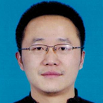Marked causative structures of Chinese verb-resultative construction
Abstract
This paper aims to study the syntactic and semantic features of ‘marked VRC causative structures’, those special syntactic-semantic structures formed by verb-resultative constructions (VRCs) which violate both the Uniformity of Theta Assignment Hypothesis and the Thematic Hierarchy. Their syntactic and semantic features are defined as follows: 1) VRC has a causative relation within itself; 2) the argument in the object position is the causee and the only argument of the resultative complement; 3) the causer in the subject position is any conceptual component from the cause event other than the agent of the predicate verb. This paper then attempts to propose an extended account to expound how they are formed syntactically and semantically. On this account, a marked VRC causative structure is re-causativization of a VRC when the VRC is self-causative; it enables other conceptual components of the cause event than the agent to become the causer when a VRC is not self-causative. There are some constraints on what becomes the causer of a marked VRC causative structure.
References
[1] Baker M (1988) Incorporation: A Theory of Grammatical Function Changing. Chicago: University of Chicago Press.
[2] Chang C (1997) V-V compounds in mandarin Chinese: argument structure and semantics. In: Packard J (ed) New Approaches to Chinese Word Formation. Berlin: Mouton de Gruyter, pp.77–102.
[3] Cheng LL and Huang J (1994) On the argument structure of resultative compounds. In: Chen MY and Tzeng OJL (eds) In Honor of William Wang: Interdisciplinary Studies on Language and Language Change. Taipei: Pyramid Press, pp.187–221.
[4] Dowty D (1979) Word meaning and Montague Grammar. The Semantic of Verbs and Times in Generative Semantics and Montague’s PTO. Dordrecht: Reidel.
[5] Goldberg AE and Jackendoff R (2004) The English resultatives as a family of constructions. Language 80: 532–568.
[6] Grimshaw J (1990) Argument Structure. Cambridge, MA: The MIT Press.
[7] Gu Y (1992) The syntax of resultative and causative compounds in Chinese. PhD Thesis, Cornell University, Ithaca (NY).
[8] Her OS (2007) Argument-function mismatches in Mandarin resultatives: A lexical mapping account. Lingua 117: 221–246.
[9] Jakendoff R (1972) Semantic Interpretation in Generative Grammar. Cambridge: MIT Press, pp.43.
[10] Jackendoff R (1987) The status of thematic relations in linguistic theory. Linguistic Inquiry 18: 369–411.
[11] Li C (2007) Mandarin resultative verb compounds: Where syntax, semantics, and pragmatics meet. PhD Thesis, Yale University, New Haven (CT).
[12] Li C (2013) Mandarin resultative verb compounds: Simple syntax and complex thematic relations. Language Sciences 37: 99–121.
[13] Li Y (1990) On V-V compounds in Chinese. Natural Language and Linguistic Theory 8: 177–207.
[14] Li Y (1995) The thematic hierarchy and causativity. Natural Language and Linguistic Theory 13: 255–282.
[15] Li Y (1997) Chinese resultative constructions: Assignment hypothesis and the uniformity of theta. In: Packard J (ed) New Approaches to Chinese Word Formation. Berlin: Mouton de Gruyter, pp.285–310.
[16] Ross C (1990) Resultative verb compounds. Journal of the Chinese Language Teachers Association 25(3): 61–83.
[17] Shi C (2008) Study on the Syntax and Semantics of Chinese Resultative Compounds. Beijing: Beijing Language University Press.
[18] Song W (2007) On the Syntax of Modern Chinese V-R Compounds: A study based on conceptual structures. Beijing: The Peking University Press.
[19] Song W (2018) More on the nature and features of so-called Chinese ‘reversed VR compounds’. Journal of Foreign Languages 5: 48–60.
[20] Shibatani M (1976) The Grammar of Causative Constructions. New York: Academic Press.
[21] Sybesma R (1991) Results in Chinese: Resultatives to an extent. MIT Working Papers in Linguistics 14: 271–284.
[22] Sybesma R (1999) The Mandarin VP. Kluwer, Dordrecht.
[23] Tai JH. Temporal sequence and word order in Chinese. In: Haiman J (ed) Iconicity in Syntax. Amsterdam: John Benjamins Publishing Company, pp.49–72.
[24] Thompson SA (1973) Resultative verb compounds in Mandarin Chinese: A case for lexical rules. Language 49: 361–379.
[25] Wu S (2013) A Study of Grammatical Metonymy Based on the Analysis of Chinese Syntactic Structures. Beijing: China Social Sciences Press.
[26] Xiong X and Wei W (2014) A causative approach to reversal resultative constructions. Foreign Language Teaching and Research 46(4): 497–507.
[27] Xiong Z (2004) Causative Sentences in Modern Chinese. Hefei: Anhui University Press.
[28] Zhang Y (2009) A construction grammar approach to inverted resultatives. Journal of Foreign Language 4: 34–42.
[29] Zhang YQ (2004) A Study on Patient-Object Clauses in Modern Chinese. Shanghai: Academia Press.
[30] Zou K (1994) Resultative V-V compounds in Chinese. MIT Working Papers in Linguistics 22: 271–290.
Copyright (c) 2019 author(s)

This work is licensed under a Creative Commons Attribution 4.0 International License.
The author(s) warrant that permission to publish the article has not been previously assigned elsewhere.
Author(s) shall retain the copyright of their work and grant the Journal/Publisher right for the first publication with the work simultaneously licensed under:
OA - Creative Commons Attribution License (CC BY 4.0). This license allows for the copying, distribution and transmission of the work, provided the correct attribution of the original creator is stated. Adaptation and remixing are also permitted.
This broad license intends to facilitate free access to, as well as the unrestricted reuse of, original works of all types.









_%E5%89%AF%E6%9C%AC1.png)

